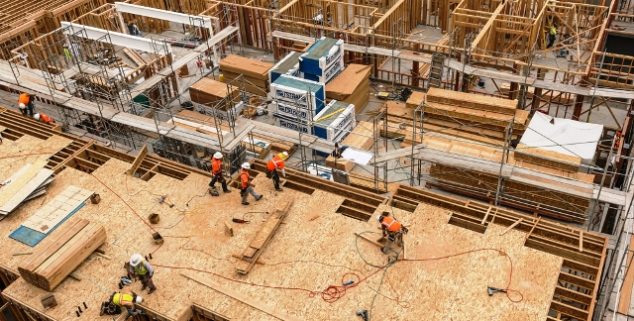Opinion
A critical need for well-trained construction workers
 Workers at a large construction site in San Jose. (Photo: pbk-pg, via Shutterstock)
Workers at a large construction site in San Jose. (Photo: pbk-pg, via Shutterstock)It’s taken an army of firefighters to battle California’s historic infernos. It will take an even larger army to rebuild the Golden State from the devastation.
As the president and CEO of the Associated Builders and Contractors of Northern California, I’ve had many reasons to be proud of the 1,200 ABC Contractors in California that have a battalion of the most highly qualified, best trained, safe workers awaiting orders to lift their hammers and saws, repair the plumbing, and lay the electrical wiring needed to restore our communities.
The National Center for Construction Education and Research (NCCER) CORE Curriculum, as it is called, was developed in 1996 with the goal of creating a safe and productive workforce.
Even with all of the current skilled workers, California will need to train more to achieve our goals of getting families back in their homes and communities.
Up until now, aspiring construction trade professionals have benefited from a high-caliber, effective curriculum that has paved the way for meaningful, long-lasting industry careers.
The National Center for Construction Education and Research (NCCER) CORE Curriculum, as it is called, was developed in 1996 with the goal of creating a safe and productive workforce through a standardized training and credentialing system for the industry. This progressive system has evolved into curricula for more than 70 craft areas and a complete series of more than 70 assessments offered in about 5,000 NCCER-accredited training and assessment locations across the county.
Here in California, between 2007 and 2017, more than 18,000 individuals have completed NCCER’s CORE Curriculum, which is host to 38 Accredited Training Sponsors utilizing NCCER systems and providing training and credentials in 108 locations across the Golden State.
Sadly, though, much of that progress in developing a skilled workforce may come to a screeching halt with the passage of AB 1111 by state leaders this past year.
Public NCCER partners include the California Department of Education, the state Department of Corrections and Rehabilitation, the community college system and the California State University system.
The bottom line: the NCCER Curriculum works – giving scores of men and women the opportunity for meaningful, well-paying construction jobs while ensuring workers are both safe and successful every day.
Sadly, though, much of that progress in developing a skilled workforce may come to a screeching halt with the passage of AB 1111 by state leaders this past year.
This legislation – and soon-to-be law – will likely disallow NCCER’s Curriculum from being utilized in pre-apprenticeship programs in California and restrict access to proven, high-level construction craft training programs that are currently widely available — and working!
Instead, the new law favors proprietary union-only curriculum, thus leaving countless aspiring industry workers out in the cold without hope for a promising future in construction. To be clear, NCCER has a number of union locals utilizing its systems (including curriculum) and providing training and credentials across the United States.
But AB 1111 favors only proprietary union-specific curricula while blatantly excluding training programs that would also appeal to workers interested in construction career opportunities.
This really hit home earlier this month as I watched apprentices ply their skills at our Annual Craft Competition, held in Livermore. Seeing faces enrapt in the act of creation, hands at work and the joy of building etched on their faces, gave me immense hope for our state’s future.
Twenty-four of our talented apprentice finalists participated in the grueling six-hour, blueprint-to-final-product, trade-specific-skills tests, with local industry professionals judging the final projects to determine who would go on to the National Craft Championship in March 2018.
Many flames have been contained, but California remains in crisis mode – and will for some time. Let’s encourage our elected officials in the new year to take off their gloves, roll up their sleeves and make every effort to support policy that won’t erect barriers of discrimination but will instead pave the way for all Californians to thrive and grow as we rebuild our great state.
—
Ed’s Note: Michele Daugherty heads the Associated Builders and Contractors’ northern California chapter, based in Livermore, which represents 500 large and small companies across the north state.
Want to see more stories like this? Sign up for The Roundup, the free daily newsletter about California politics from the editors of Capitol Weekly. Stay up to date on the news you need to know.
Sign up below, then look for a confirmation email in your inbox.

Leave a Reply